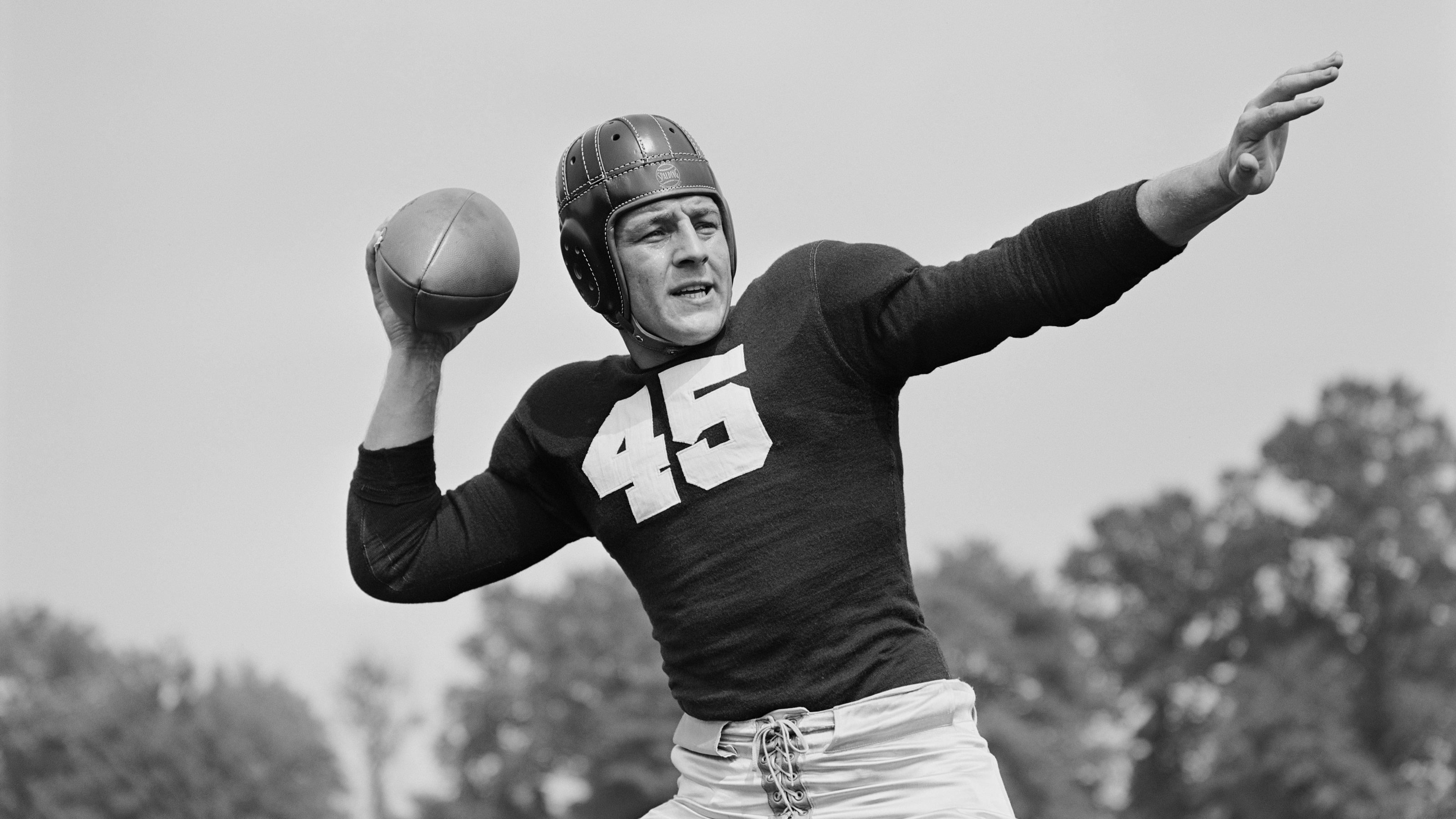Collectible Vintage Photos Emerge as Investable Asset Class
Many of the most valuable vintage photos are sports-related, and limited supply and high demand, as well as careful and trusted authentication, are key.


With global financial markets sliding sideways, visionary investors are on the lookout for new asset classes. One tangible subclass you can actually see with your eyes is worth checking out: vintage photos.
Fine art pieces have long been found in the portfolios of high-net-worth individuals and institutions — and even pooled, in recent years, and turned into quasi-securities. The unique digital images known as NFTs (non-fungible tokens) were a massive craze-turned-crash.
Vintage photographs occupy a different space, more closely adjacent to the world of rare collectibles. Many of the most valuable vintage photos are sports-related: In 2020, a 110-year-old photo of legendary baseball player Ty Cobb sold for an eye-popping $390,000. Auction houses like Robert Edward, Heritage, Lelands and even eBay routinely facilitate trades of images for tens of thousands of dollars each.

Sign up for Kiplinger’s Free E-Newsletters
Profit and prosper with the best of expert advice on investing, taxes, retirement, personal finance and more - straight to your e-mail.
Profit and prosper with the best of expert advice - straight to your e-mail.
As with collectibles like sports trading cards and autographs, the key to value in vintage photographs is not only limited supply and high demand but careful and trusted authentication. Investment-grade vintage photographs tend to be authenticated by one of a handful of well-known firms, such as PSA (where Mark Cuban and Kevin Durant are significant investors).
PSA was also instrumental in the creation of a system for grading vintage photographs that has become the market standard. Photos are classified as being one of four types, based on proximity to the original negative. Types III and IV, the least valuable, are produced from duplicate negatives. Type II photos come from the original negative but were made two or more years after the photo was taken. Type I photos are printed from the original negative within two years of the original event.
Most or all investment-grade vintage are either Type I or Type II photos. The $390,000 Cobb image was judged to be a Type I photo, taken and developed on the same day (July 23, 1910) by a known photographer, Charles Conlon of the New York Evening Telegram).
As with all forms of art, the value of a vintage photograph has a subjective element that is dependent on the content and composition of the image itself. Original photos of timeless celebrities will always have value, even if they aren’t particularly vintage. A 1993 print of British model Kate Moss by fashion photographer Albert Watson sold for $25,000 in 2017.
But in a world that is now and will forever be awash in cheap digital content, all types of high-grade vintage photographs have the power to hold collectors’ and investors’ attention.
In line with fine art and collectibles, a driving force in the vintage photo market is a community of passionate enthusiasts and connoisseurs who find satisfaction in owning rare things of beauty or historical significance. But vintage photos have also drawn an increasing number of investors primarily interested in financial return and diversification.
As for how investors can access this market, there’s no single or simple answer, but the more reputable auction houses and well-known dealers are good places to start.
Even for those with a passion for collecting will want to limit asset subclasses like vintage photos to 10% or so of your overall portfolio. (I’m a sports memorabilia collector, and my collection, acquired over several decades, hovers around this mark in mine.)
It’s also good to remember that these aren’t necessarily highly liquid assets and that they’re better suited to longer holding periods. Within your portfolio, I think it’s useful to think in terms of three pools: one up to 10 years, one from 11 to 20 years and a third that’s 20-plus years. All tangible collectible assets should go into the latter two pools.
This also means that serious investors/collectors will have a mindset of buying during market downturns, just as with financial assets. But while collectibles markets will soften during financial downturns, such assets can be surprisingly non-correlated to other markets, in particular the stock market. That’s a useful feature for wealth management planning and may be particularly relevant if today’s sideways trend continues.
The many disruptions on the horizon for our AI-infused world may help stoke the deep-rooted human longing for tangible assets and simpler moments. Together, I see those factors continuing to drive the market for vintage photographs. That means some pictures will be worth not only a thousand words, but tens or hundreds of thousands of dollars.
Get Kiplinger Today newsletter — free
Profit and prosper with the best of Kiplinger's advice on investing, taxes, retirement, personal finance and much more. Delivered daily. Enter your email in the box and click Sign Me Up.

Tom Ruggie, ChFC®, CFP®, founded Destiny Family Office, a Destiny Wealth Partners firm, to help clients manage the increasing complexities inherent in their business and personal lives. He has identified three key areas where his firm can make a significant difference: presenting a compelling sphere of investments, including alternative, direct and co-investment opportunities; creating a special emphasis on high-end collectors whose collections signify significant alternative investments; and strengthening the firm’s private trust capabilities. Ruggie has become one of the most respected financial advisers in the industry, receiving national recognition and rankings including: 7x Forbes Best-in-State Wealth Advisors (including 2024; #1 N Florida), InvestmentNews Awards RIA Team of the Year (2024), Forbes Top 250 RIA Firms (2023), Forbes Finance Council since 2016, 12x Barron’s Top 1200 Financial Advisors (including 2024), InvestmentNews Top 75 Fastest-Growing Fee-Only RIAs (2023), 12x Financial Advisor Magazine America’s Top RIAs (including 2024), 3x Family Wealth Report Awards Finalist (2024), USA Today Best Financial Advisory Firms (2023).
-
 The AI Doctor Coming to Read Your Test Results
The AI Doctor Coming to Read Your Test ResultsThe Kiplinger Letter There’s big opportunity for AI tools that analyze CAT scans, MRIs and other medical images. But there are also big challenges that human clinicians and tech companies will have to overcome.
By John Miley Published
-
 The Best Places for LGBTQ People to Retire Abroad
The Best Places for LGBTQ People to Retire AbroadLGBTQ people can safely retire abroad, but they must know a country’s laws and level of support — going beyond the usual retirement considerations.
By Drew Limsky Published
-
 Financial Planning's Paradox: Balancing Riches and True Wealth
Financial Planning's Paradox: Balancing Riches and True WealthWhile enough money is important for financial security, it does not guarantee fulfillment. How can retirees and financial advisers keep their eye on the ball?
By Richard P. Himmer, PhD Published
-
 A Confident Retirement Starts With These Four Strategies
A Confident Retirement Starts With These Four StrategiesWork your way around income gaps, tax gaffes and Social Security insecurity with some thoughtful planning and analysis.
By Nick Bare, CFP® Published
-
 Should You Still Wait Until 70 to Claim Social Security?
Should You Still Wait Until 70 to Claim Social Security?Delaying Social Security until age 70 will increase your benefits. But with shortages ahead, and talk of cuts, is there a case for claiming sooner?
By Evan T. Beach, CFP®, AWMA® Published
-
 Retirement Planning for Couples: How to Plan to Be So Happy Together
Retirement Planning for Couples: How to Plan to Be So Happy TogetherPlanning for retirement as a couple is a team sport that takes open communication, thoughtful planning and a solid financial strategy.
By Andrew Rosen, CFP®, CEP Published
-
 Market Turmoil: What History Tells Us About Current Volatility
Market Turmoil: What History Tells Us About Current VolatilityThis up-and-down uncertainty is nerve-racking, but a look back at previous downturns shows that the markets are resilient. Here's how to ride out the turmoil.
By Michael Aloi, CFP® Published
-
 Home Insurance: How to Cut Costs Without Losing Coverage
Home Insurance: How to Cut Costs Without Losing CoverageNatural disasters are causing home insurance premiums to soar, but don't risk dropping your coverage completely when there are ways to keep costs down.
By Jared Elson, Investment Adviser Published
-
 Markets Roller Coaster: Resist the Urge to Make Big Changes
Markets Roller Coaster: Resist the Urge to Make Big ChangesYou could do more harm than good if you react emotionally to volatility. Instead, consider tax-loss harvesting, Roth conversions and how to plan for next time.
By Frank J. Legan Published
-
 Why Homeowners Insurance Has Gotten So Very Expensive
Why Homeowners Insurance Has Gotten So Very ExpensiveThe home insurance industry is seeing more frequent and bigger claims because of weather, wildfires and other natural disasters.
By Karl Susman, CPCU, LUTCF, CIC, CSFP, CFS, CPIA, AAI-M, PLCS Published